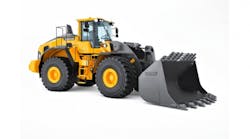Develop relationships and expand profits with parts sales.
Editor's note: This is the final article in a three-part series on profiting from your parts and service departments. Part one, "Service Call," appeared in the May issue of RER. Part two, "Turning Parts Into Profit," appeared in the August issue.
Finding parts for anything these days can be a pain. Yet, in a society disposed toward disposables, some people still buy quality equipment - like the equipment rental centers sell.
Chances are, you stock parts for equipment that you rent and even for what you sell, but does anyone know? Does your advertising feature your parts department? Or do people walk up to your parts counter and say, "Wow! I didn't know you sold parts."
For every customer like that, rest assured that there are two or three to whom you'll never sell parts because they don't know your parts counter exists. Let people know that besides being the best place in town for rental equipment, your rental center also is the source for replacement parts.
To make sure that it is, get acquainted with the various parts distributors in your area and across the country. Many parts sales are lost simply because the parts department didn't know it could get the part. Request line cards from your suppliers - a line card tells you everything a supplier has available. It is invaluable information to have. When you find a part for someone who hasn't found it anywhere else, you'll have gained a customer.
Pricing parts Once you know where to get a part, how do you price it? Obviously, you must make enough profit to justify the time required to find the part. The first step is to know what you paid for it. I prefer the 50 percent markup - half of the final price is profit. This helps cover administrative costs such as looking up the part and billing while netting a tidy profit.
Of course, exceptions can be made for very expensive parts, but make sure you make enough profit to justify the effort. One way to do that is to charge a minimum shipping and handling fee. Customers are used to such a charge, but make sure you post your minimum charge in a prominent place - right next to the sign that states, "All special-order parts must be paid for in advance."
This policy might not be popular with some, but it will save you worry and money. If someone orders a part and pays for it in advance, chances are that customer will be back for it and you won't be stuck with an oddball part. Which brings us to the obvious question: How far should you go in pursuit of parts sales? Should you try to supply parts for everything? No. How far you go depends on whether there is enough profit in the part. If you have to spend 20 minutes looking up a part and then net only 10 cents in profit, the answer is no. If, however, you have suppliers who will look up the part for you - and you collect your minimum shipping and handling fee - the answer changes.
Minimizing parts returns One way to minimize parts returns is to require the model and serial numbers before making any effort to get parts for the equipment. The next step is to make sure the customer knows exactly what he or she needs.
Finally, adopt a policy about returns, such as "No cash refunds - exchange only," and stick to it. This policy also should be prominently posted and explained to your customers. You can adopt several such policies, such as "No returns unless in new condition" and "No returns on electrical parts." Several suppliers have these policies. The time to find out that your supplier won't accept a return is before your customer gets a refund, not after you're left holding the bag.
Make sure your return policies agree with your suppliers', and if customers ask about them, just tell them the truth: "I can't take it back because they won't take it back." Fair enough.
So you've made the order and collected the money - now what? Call the customer if there is any delay (such as a back order). Also, call the customer the minute the part comes in. Be sure to have a sales ticket on each special-order part with the customer's phone number so that you can contact the customer immediately. If you take the time to enter this information into your computer, you can build a customer database and help determine which parts you should stock.
It might seem that special-order parts require a lot of effort, but when handled properly, they really can add to your bottom line.


